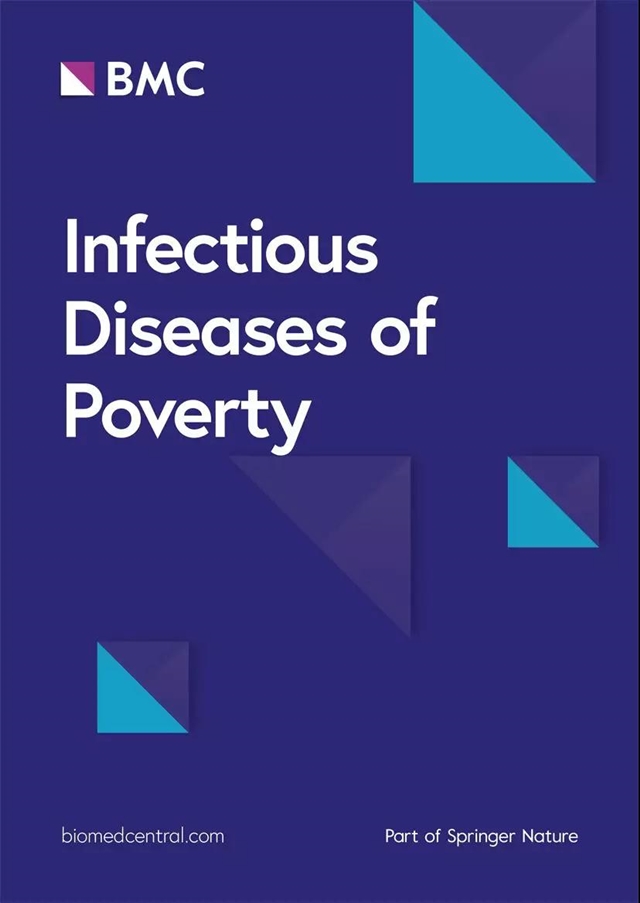New clinical application prospects of artemisinin and its derivatives: a scoping review
IF 5.5
1区 医学
Q1 INFECTIOUS DISEASES
引用次数: 0
Abstract
Recent research has suggested that artemisinin and its derivatives may have therapeutic effects on parasites, viruses, tumors, inflammation and skin diseases. This study aimed to review clinical research on artemisinin and its derivatives except anti-malaria and explore possible priority areas for future development. Relevant articles in English and Chinese published before 28 October 2021 were reviewed. All articles were retrieved and obtained from databases including WanFang, PubMed/MEDLINE, the Cochrane Library, China National Knowledge International, Embase, OpenGrey, the Grey Literature Report, Grey Horizon, and ClinicalTrials.gov. Studies were selected for final inclusion based on predefined criteria. Information was then extracted and analyzed by region, disease, outcome, and time to identify relevant knowledge gaps. Seventy-seven studies on anti-parasitic (35), anti-tumor (16), anti-inflammatory (12), anti-viral (8), and dermatological treatments (7) focused on the safety and efficacy of artemisinin and its derivatives. The anti-parasitic clinical research developed rapidly, with a large number of trials, rapid clinical progress, and multiple research topics. In contrast, anti-viral research was limited and mainly stayed in phase I clinical trials (37.50%). Most of the studies were conducted in Asia (60%), followed by Africa (27%), Europe (8%), and the Americas (5%). Anti-parasite and anti-inflammatory research were mainly distributed in less developed continents such as Asia and Africa, while cutting-edge research such as anti-tumor has attracted more attention in Europe and the United States. At the safety level, 58 articles mentioned the adverse reactions of artemisinin and its derivatives, with only one study showing a Grade 3 adverse event, while the other studies did not show any related adverse reactions or required discontinuation. Most studies have discovered therapeutic effects of artemisinin or its derivatives on anti-parasitic (27), anti-tumor (9), anti-inflammatory (9) and dermatological treatment (6). However, the efficacy of artemisinin-based combination therapies (ACTs) for parasitic diseases (non-malaria) is still controversial. Recent clinical studies suggest that artemisinin and its derivatives may be safe and effective candidates for anti-tumor, anti-parasitic, anti-inflammatory and dermatological drugs. More phase II/III clinical trials of artemisinin and its derivatives on antiviral effects are needed.青蒿素及其衍生物的新临床应用前景:范围综述
最近的研究表明,青蒿素及其衍生物可能对寄生虫、病毒、肿瘤、炎症和皮肤病有治疗作用。本研究旨在回顾除抗疟疾外有关青蒿素及其衍生物的临床研究,并探讨未来可能优先发展的领域。研究回顾了 2021 年 10 月 28 日之前发表的相关中英文文章。所有文章均从万方、PubMed/MEDLINE、Cochrane图书馆、中国国家知识国际、Embase、OpenGrey、灰色文献报告、Grey Horizon和ClinicalTrials.gov等数据库中检索获得。根据预先确定的标准筛选出最终纳入的研究。然后按地区、疾病、结果和时间对信息进行提取和分析,以确定相关的知识缺口。关于抗寄生虫(35 项)、抗肿瘤(16 项)、抗炎(12 项)、抗病毒(8 项)和皮肤病治疗(7 项)的 77 项研究重点关注青蒿素及其衍生物的安全性和有效性。抗寄生虫临床研究发展迅速,试验数量多,临床进展快,研究课题多。相比之下,抗病毒研究数量有限,主要停留在一期临床试验(37.50%)。大多数研究在亚洲进行(60%),其次是非洲(27%)、欧洲(8%)和美洲(5%)。抗寄生虫和抗炎研究主要分布在亚洲和非洲等欠发达大陆,而抗肿瘤等前沿研究在欧洲和美国更受关注。在安全性方面,58 篇文章提到了青蒿素及其衍生物的不良反应,其中只有一项研究出现了 3 级不良反应,其他研究均未出现相关不良反应或需要停药。大多数研究发现,青蒿素或其衍生物具有抗寄生虫(27)、抗肿瘤(9)、抗炎(9)和皮肤病治疗(6)的疗效。然而,青蒿素类复方疗法(ACTs)对寄生虫病(非疟疾)的疗效仍存在争议。最近的临床研究表明,青蒿素及其衍生物可能是安全有效的抗肿瘤、抗寄生虫、抗炎和皮肤病药物。还需要对青蒿素及其衍生物的抗病毒作用进行更多的 II/III 期临床试验。
本文章由计算机程序翻译,如有差异,请以英文原文为准。
求助全文
约1分钟内获得全文
求助全文
来源期刊

Infectious Diseases of Poverty
Medicine-Public Health, Environmental and Occupational Health
CiteScore
16.70
自引率
1.20%
发文量
368
审稿时长
13 weeks
期刊介绍:
Infectious Diseases of Poverty is a peer-reviewed, open access journal that focuses on essential public health questions related to infectious diseases of poverty. It covers a wide range of topics and methods, including the biology of pathogens and vectors, diagnosis and detection, treatment and case management, epidemiology and modeling, zoonotic hosts and animal reservoirs, control strategies and implementation, new technologies, and their application.
The journal also explores the impact of transdisciplinary or multisectoral approaches on health systems, ecohealth, environmental management, and innovative technologies. It aims to provide a platform for the exchange of research and ideas that can contribute to the improvement of public health in resource-limited settings.
In summary, Infectious Diseases of Poverty aims to address the urgent challenges posed by infectious diseases in impoverished populations. By publishing high-quality research in various areas, the journal seeks to advance our understanding of these diseases and contribute to the development of effective strategies for prevention, diagnosis, and treatment.
 求助内容:
求助内容: 应助结果提醒方式:
应助结果提醒方式:


